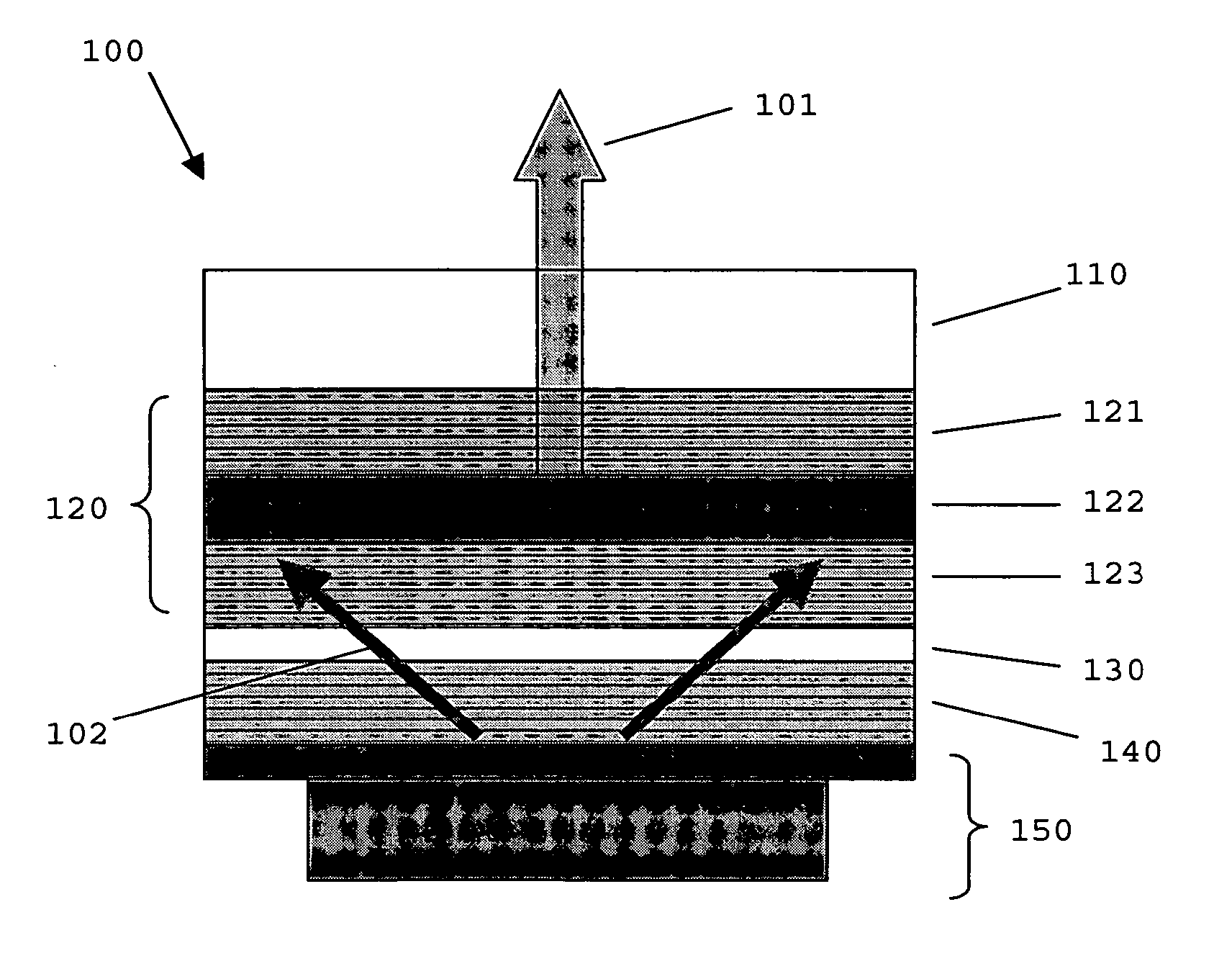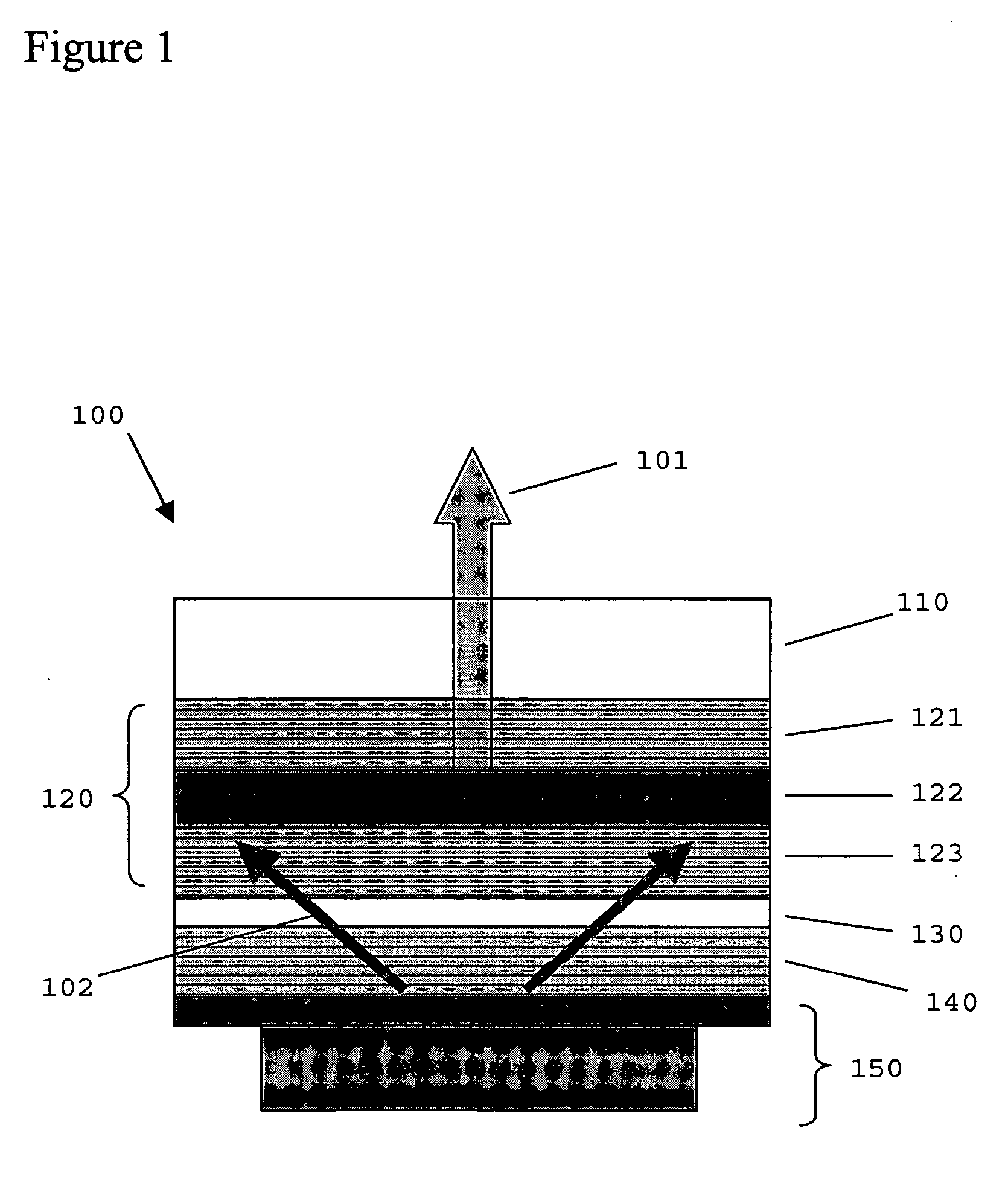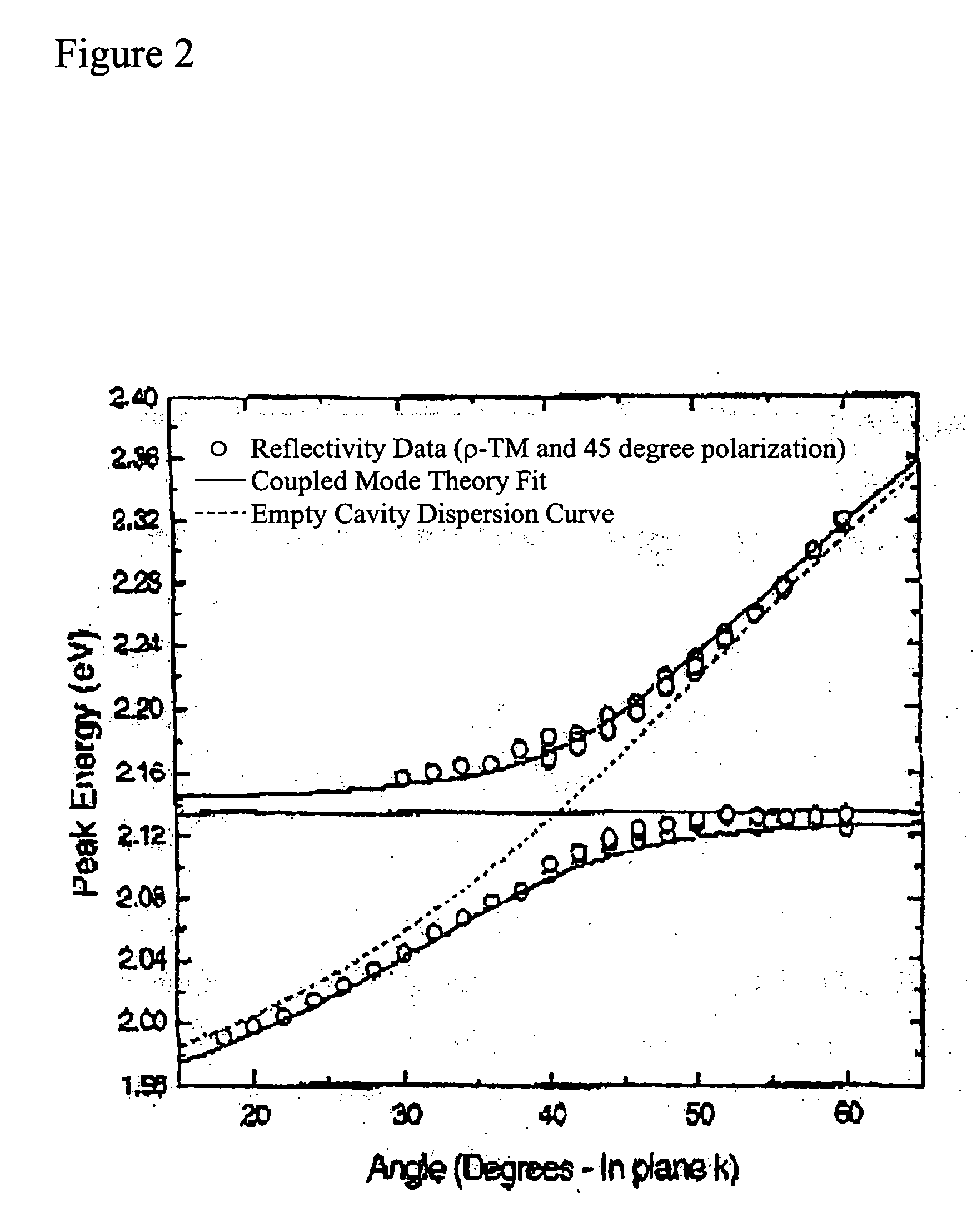Organic polariton laser
- Summary
- Abstract
- Description
- Claims
- Application Information
AI Technical Summary
Problems solved by technology
Method used
Image
Examples
example 1
[0043] An OMCs completely filled with the thermally evaporated polycrystalline material 3,4,7,8 napthalenetetracarboxylic dianhydride (NTCDA) was prepared and exhibited strong coupling and the hybridization of excitons arising from separate vibronic transitions characteristic of this molecular species. Distributed Bragg reflectors (DBR) consisting of 8 pairs of quarter wavelength thick SiO2 and SiNx layers were deposited on quartz substrates using plasma enhanced chemical vapor deposition, yielding a peak reflectivity of 90%. A polycrystalline film of NTCDA was deposited onto the DBR mirror by sublimation at 10−7 Torr, forming a cavity between the DBR and a 200 nm Al cap deposited onto the NTCDA surface by thermal evaporation. The dispersion relation of each OMC was determined by using angularly resolved reflection spectroscopy, measuring sample reflectivity as a function of excitation wavelength and angle (R. Houdre, C. Weisbuch, R. P. Stanley, U. Oesterle, P. Pellandini, and M. Il...
example 2
[0047] Microcavities with 40 m and 60 nm thick active layers of NTCDA were fabricated as in Example 1. In general, Ω varies as (αL)1 / 2, where α and L are the absorption coefficient and thickness of the NTCDA layer respectively (C. Weisbuch, M. Nishioka, A. Ishikawa, and Y. Arakawa, Phys. Rev. Lett. 69, 3314 (1992)). Reflectivity spectra collected at selected angles for these microcavities are depicted in FIG. 7. Aside from the features arising from coupling between the cavity mode and the 0-0 transition of NTCDA, a third feature is also observed at higher energy, consistent with coupling to the 0-1 transition of NTCDA, yielding the dispersion relations in FIG. 8. Anti-crossing between branches is observed, and both the middle and upper branches asymptotically approach their respective uncoupled exciton energies at low angle. The middle branch of the dispersion relation for both thicknesses becomes clearly visible at θ>20°, whereas the top branch is observed at θ>35°, where this bran...
PUM
 Login to View More
Login to View More Abstract
Description
Claims
Application Information
 Login to View More
Login to View More - R&D
- Intellectual Property
- Life Sciences
- Materials
- Tech Scout
- Unparalleled Data Quality
- Higher Quality Content
- 60% Fewer Hallucinations
Browse by: Latest US Patents, China's latest patents, Technical Efficacy Thesaurus, Application Domain, Technology Topic, Popular Technical Reports.
© 2025 PatSnap. All rights reserved.Legal|Privacy policy|Modern Slavery Act Transparency Statement|Sitemap|About US| Contact US: help@patsnap.com



